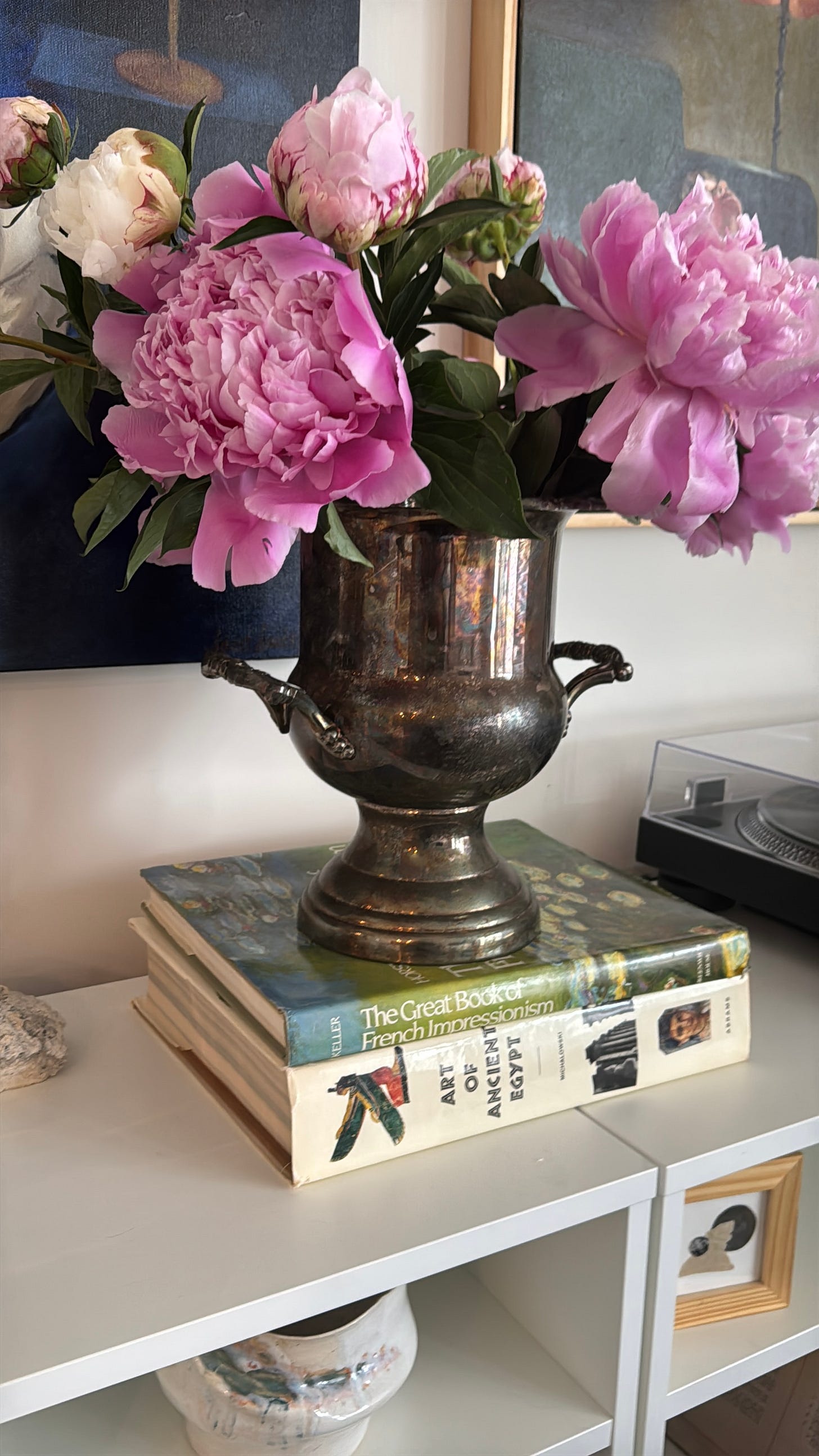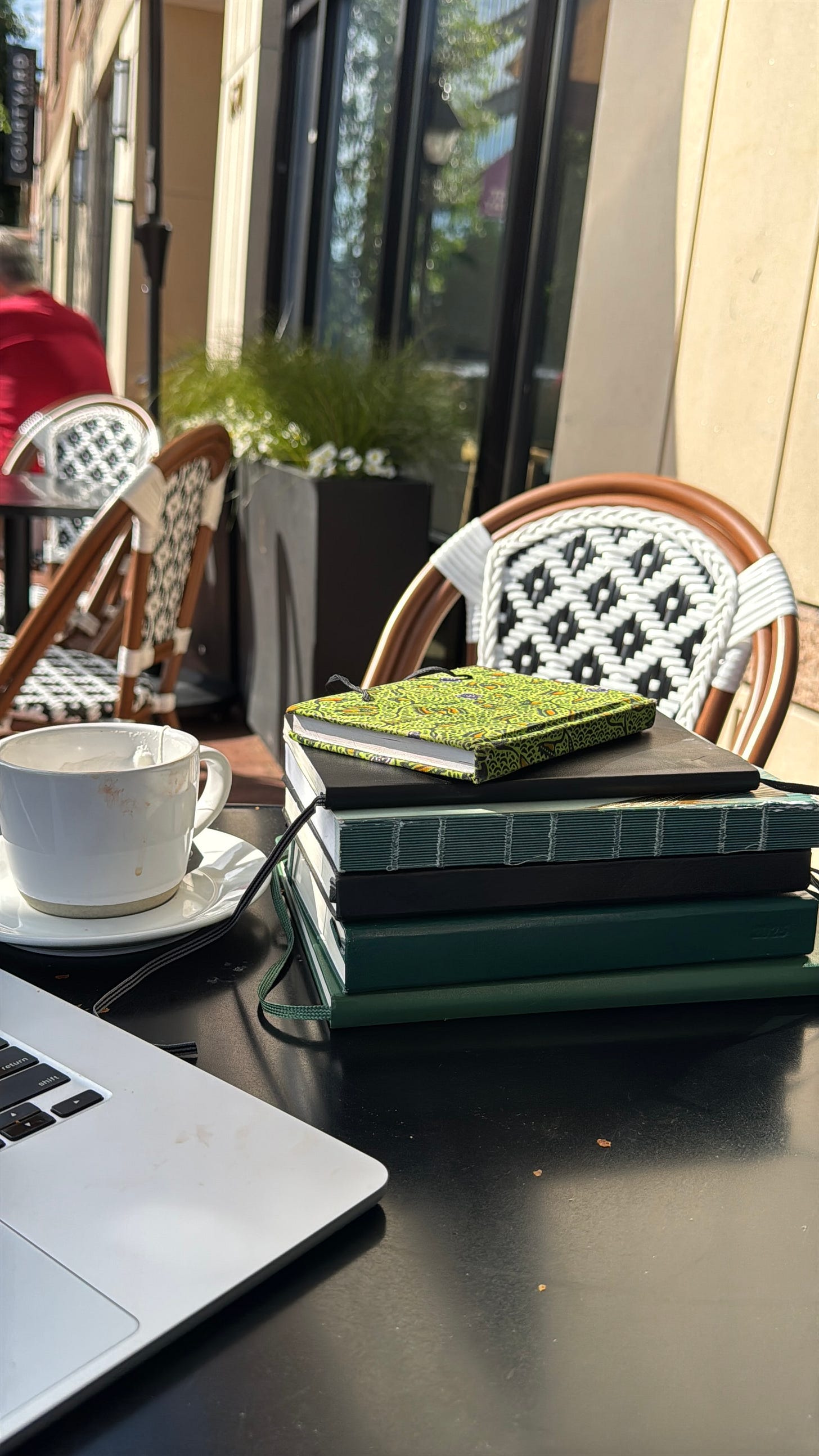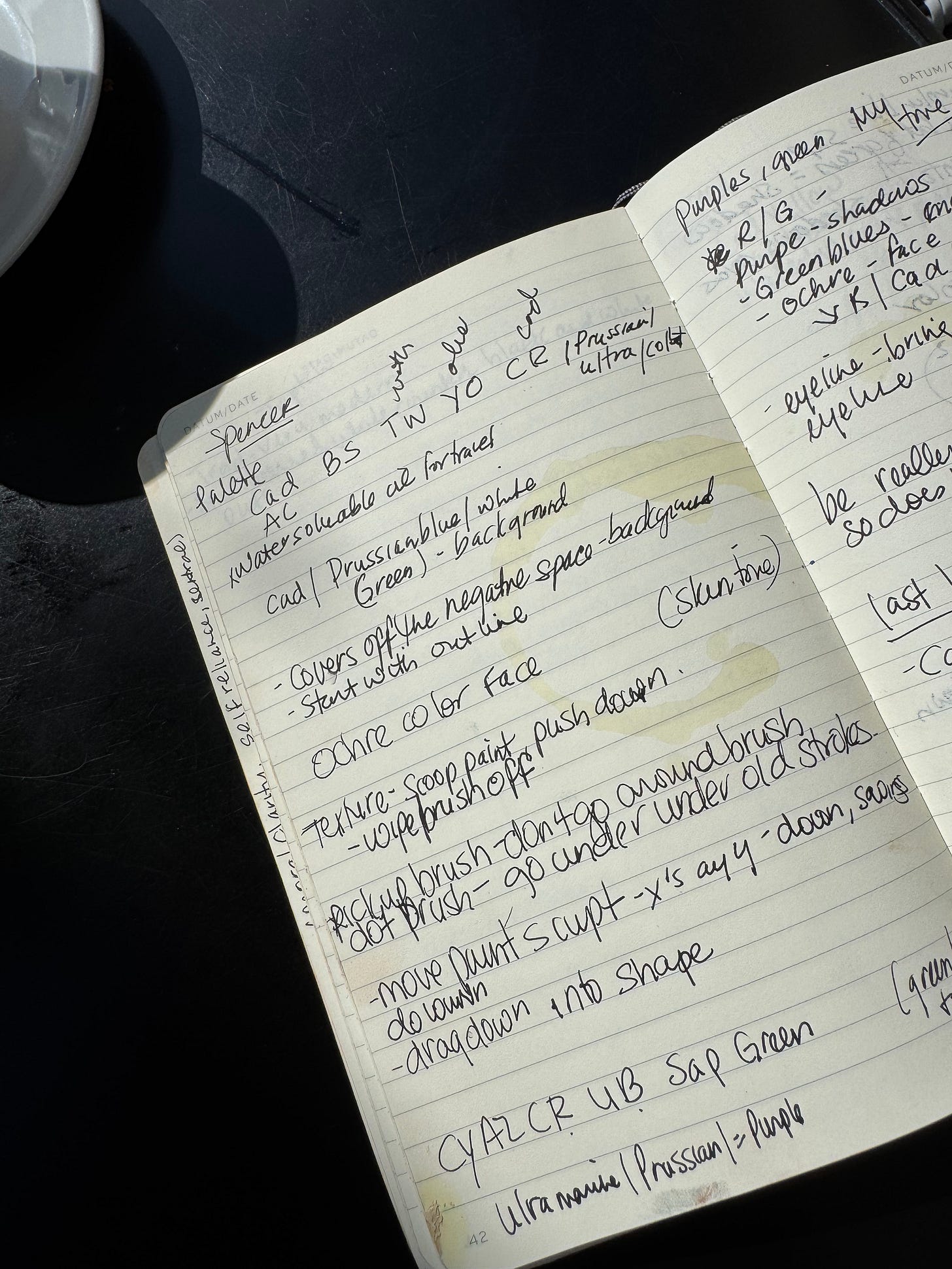What helped me stick to journaling
and made my journal a record of living, not just struggling
I’ve been thinking about the place journaling has in our lives and why I used to be an inconsistent journaler.
I was inconsistent because I kept just one journal, and it was mostly a place where I dumped all of my dread. When I re-read it, my stomach would curl. It was pages and pages of complaining, because I only chose to journal when I was processing negative stuff. It was basically the same thing I did as a 12-year-old in my pink bedroom in the late '80s. Some years, I’d end up trashing those journals out of disgust.
In recent years, I’ve wanted to be “good” at journaling because I enjoy the act of record-keeping. And I thought to myself, there’s got to be a more “adult” way to journal that isn’t so “Dear Diary”-esque. I know there’s no “right” way to journal, and that a journal can very much be a dumping ground or organic or whatever, but I needed more.
After talking to others about how they journal, and reading both published journals and journal-like books, I finally figured out a practice that works for me. It answered two big questions I had about journaling:
What should I include in my journal so it’s not just a record of mostly shitty days?
What physical journals should I keep?
Some answers on what to include
After reading May Sarton’s Journal of a Solitude and currently reading Alice Walker’s Difficult Times and Henry David Thoreau’s Walden, which aren’t structured as journals but present ideas and notes drawn from them. I realized I hadn’t been journaling what I noticed in my outer world. I was focused entirely on my inner world and how I was “struggling”. I now think a good journal practice should have both.
For instance, in the past, I rarely wrote about the changing seasons, the flowers I chose for the week (last week it was gladiolus) like May Sarton, world events or news like Alice Walker, or my philosophy on life like Thoreau in Walden.
Instead of only rambling about who or what bristled me or extreme moments of joy, I needed to include the mundane. The weather. How good a seasonal fruit tasted (because I swear fruit tasted better decades ago, and I never recorded it). The artwork I’ve been painting and why I chose it. How the light bounced on my walls that morning. The stock market crashing. Global events. My evolving philosophy about social media. A quote I read in a book.
These are the kind of things that remind me of what makes me me and they are the details that would remind my children, or anyone who might one day stumble upon my journals, of the person I was and the life I lived and observed.
When I read published journals, I’ve always found that the mundane observations and reflections on historical moments alongside the highs and lows of their emotional lives are the things that help me understand the person more fully. I want to bring more of that into my own journal practice.
Some answers on what to write in
One of my biggest revelations was that keeping everything in one journal wasn’t working. I needed multiple journals for multiple purposes. I’m now a very consistent journaler because of my current setup. It allows me to write regularly in different but meaningful ways.
Let’s start with the two I use almost every day:
A Brief Record of the Day Journal – This is a Leuchtturm dated journal that offers just one page per calendar day over 365 days, so you have to be brief. I jot down highlights of my day: global news I heard, happenings at home, birds I saw on my walk (robins have been on my walking path lately) , flowers blooming in my neighbor’s yard (right now, it’s lavender and roses), what I did for movement, special meals I cooked, things that made me smile, the stock market crashing, tariffs, anything really.
I rarely miss a day because this isn’t an emotional dump journal. It helps me witness my life, both the small and the big things, through quick bullet points. Recently I wrote about Canada’s elections, gladiolus and peonies, and how spring felt this year.
Art Journal – This is a small, thin Leuchtturm journal where I jot down paint color mixes, things my art teacher says that I want to remember, and interesting techniques I saw on YouTube or Substack. I take it with me to museum exhibits to take notes.
Here are the journals I use weekly or annually:
Traditional Journal (Dear Diary) – This is the type of journal I’ve kept since I was 12. I whine in this one, process emotions, share big joys and lows, and reflect on my inner world. I don’t write in it often. I tend to process my emotions out loud with my trusted people. Because of that, this journal usually takes 2–3 years to fill.
Commonplace Journal – In this journal, I write down quotes from books, films, podcasts, music, or live lectures. About twice a month, after finishing a book or collecting notes in my phone, I’ll sit at a cafe with headphones and write out the gems I’ve discovered that month.
Travel Journal – I started keeping a separate travel journal in 2016. The first trip I documented was to South Africa. Since then, I’ve taken this journal on all my adventures—France, Spain, Indonesia, Mexico, Italy, Amsterdam, my solo caravan trip, Ghana, and several U.S. states. I’ve recently been reading and sharing some of these entries on my blog. This journal is especially dear to me. I’d never throw it out. It's filled with mundaneness, wonder and tells the story behind the hundreds of photos in my camera roll.
Research Journal – The last journal I keep is a research journal where I capture notes, themes, and my understanding of texts related to the topics I’m self-studying at the moment. I’ve shared that I’m currently studying Silence, Solitude, and Time. This journal includes notes, book lists, syllabus and citations, just like I did as a college student. Writing in it feels studious and scratches my curiosity itch and my belief in self-education.
It takes six journals to capture the full range of my life in a way that feels like I am truly recording my life, making space for reflection and witnessing myself move through all the stages and interests in my life.
I’m genuinely interested to know how you journal, what you write about, and how you do it. Please share in the comments.







I too discovered you through Petya’s post and have promptly subscribed! Not only does your journaling style appeal to me - it makes sense to keep a separate journal for different aspects of your life. At the moment I have a travel journal which is the most used as I am travelling more than being at home. At home I have a one line a day journal which was supposed to get me back into journaling before I started the travel journal. A commonplace book is something I e always had except I never knew that’s what it was called - it had all the detritus of the mundane in my life but now I’m more mindful of putting in only what speaks to me and causes me to pause for thought.
I’ve also this year discovered ‘slow- reading’ and am currently reading War & Peace. Last year I was on Good Reads a lot trying to keep up to the reading challenge but this year it’s back to my manual list and just reading really S-L-O-W!
Hi Janet, I read this post a while back but recently looked it up again, so I wanted to comment to say how much I appreciate it. I love reading about other people's journaling practices and your break down of the different functions of journaling and personal record-keeping is so interesting and making me think about how to expand my journaling practice. I currently have one journal (plus I use Obsidian as a kind of commonplace book) and, like you in the past, my journal tends to be very focused on 'internal processing'. While that serves an important function, I also want to capture more of what's happening in the world around me. I like your idea of having a briefer 'record of the day' journal and am thinking of incorporating that into my practice, so thank you for the inspiration!